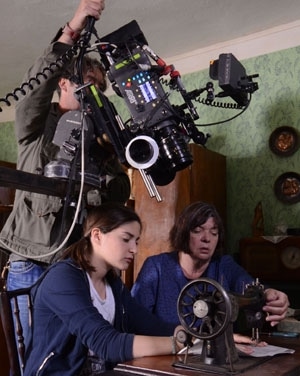
Speaking about the state of the cinematographer’s profession in Serbia, I would dare to say that the situation is gloomy.
The condition of the cinema production in Serbia is grave. Long-lasting economic crisis and long-term inadequate cultural policy brought to drastic reduction of the number and quality of the produced films.
Average audience of the films is so low that making of commercially lucrative films became almost impossible, so the potential investors aren’t interested in investing in film production. Already collapsed cinema network was further striken by the transition to DCP technology. Being unable to finance this transition from their own resources, many cinemas ceased to work.
Many films are produced from the material originally made for the TV series.
For several years, Serbian cinema survives only on enthusiasm of the film workers and authors and frugal film development funds. As these funds decrease, production slowly vanishes.
All these elements led to bankruptcy and closing of many production companies. That gap is filled by bold individuals without any prior experience in film production. Being unsure in what they do, the productions increase the pressure on the film crews and create inadequate atmosphere. The effect is the collapse of the traditional standards of the professional production. Shooting on real locations and without any set adaptation and costumes becomes standard, not the artistic decision – period movies become rarity. Some necessary professions are abolished and some are consolidated to reduce the number of the crew members. That opened the opportunity to hire unqualified, instead of trained workers. Film preparation period is being carried-out with inadequate or no compensation. Number of shooting days is often reduced to time lower than realistic minimum, so this often results in unacceptable overtime without any compensation.
Trying to save the money and influenced by aggressive global marketing campaigns, many producers bought inadequate low-cost and low-quality equipment which they use for film production. Misled by claims that the results achieved by inexpensive equipment are similar to results achieved by professional equipment, producers started to be suspicious about the cinematographer’s requests. Increase in sensitivity of the cameras is often understood as the opportunity to reduce or completely exclude the needed light equipment kit, so the use of one of the basic cinematographer’s tools became interrogative. Massive and unselective use of the photo-cameras for TV and sometimes even theatrical film further whitnesses about the lack of the consciousness about the selection of the adequate tools.
Post-production VFX potentials are mistaken as some kind of magic wand for all the errors and faults made during production, which again leads to increased pressure on the cinematographers to work in completely inadequate conditions.
With all the above mentioned, absence of collective contracts with film authors and workers and collapsed Unions which would guarantee minimum rights and wages of the film workers in the country in dire economy difficulties, makes the situation further complicated and weakens the position of the film-makers. Unpaid wages, not to mention overtime, is everyday practice.
In endaveour to protect our members – our Statute, SAS code of conduct and model Contract are part of binding documents package every member has to accept with applying for SAS membership. We continuously request to talk to legislators to try to protect minimum legal work rights and residual author’s rights. So far, we were unsuccessful, due to the continual changes of the state policy in many aspects, due to harmonization with European legislature.
Unfortunately, without the intention to generalize, we have the impression that our problems are not unique or region-specific. Our profession hesitates to speak about. Our profession is in Darwinistic position: to adapt and survive or die. It is time to speak out.
Predrag Bambic SAS


























